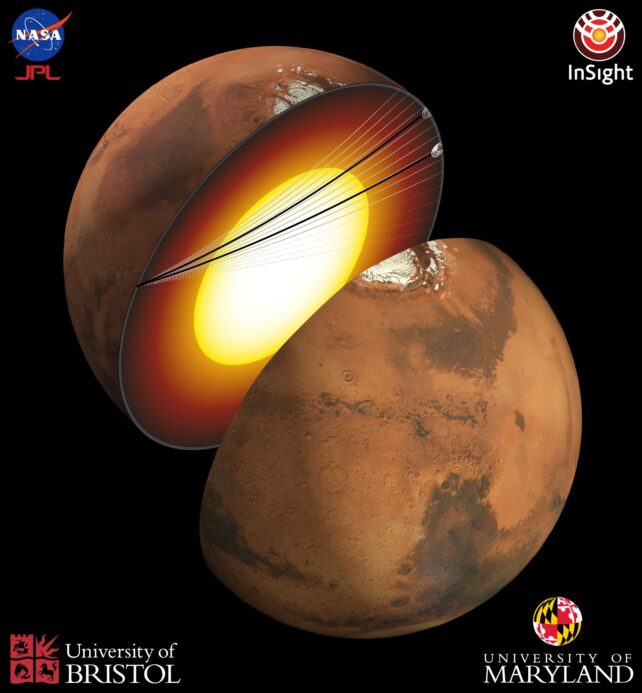An amazing mixture of elements.. Scientists discover the heart of Mars for the first time
Weather of Arabia - Scientists at the University of Maryland, USA, monitored seismic waves reverberating through Mars, and revolving in its viscous heart for the first time, which gave them the tools they need to know what the Martian heart consists of, which carries an amazing mixture of elements inside it.
According to seismic data obtained using NASA's InSight rover, which has monitored the bowels of the Red Planet for four years, the center of Mars is a liquid iron alloy, with surprisingly large amounts of sulfur and oxygen mixed. This information can help scientists better understand Mars and why it is different from Earth.
For his part, Professor of Geology, Vedran Lekic, from the University of Maryland in the United States of America, said: “In 1906, scientists first discovered the Earth’s core by observing how seismic waves generated by earthquakes are affected by traveling through it. After more than a hundred years, we apply our knowledge "Seismographs on Mars With InSight, we're finally discovering what's at the center of Mars and what makes Mars so similar yet distinct from Earth."

Discovering the "intestines" of Mars
During its relatively short period of observation of the inner part of Mars, InSight detected hundreds of earthquakes, giving scientists detailed information about the inner part of Mars. From here, scientists were able to compile the first detailed map of the bowels of Mars, and learn more about the state of the internal activity of Mars, according to the scientific journal "PNAS".
And "Insight" was able to record two seismic events on the surface of Mars, one caused by a Martian earthquake and the other due to a large meteorite impact on the other side of Mars, and detected waves that passed through the planet's core, and the team was able to know that seismic waves moved through the heart of Mars.
These waves also reveal the density and compression of the different materials they travel through, allowing a team led by planetary scientist Jessica Irving, from the University of Bristol in the UK, to decipher what the Martian core is made of.

(Probe Insight on Mars)
A liquid core, unlike the Earth's core
In turn, Nicholas Schmier, a geologist at the University of Maryland, explained that: “Mars most likely contains a very liquid core, unlike the Earth’s core, which appears to be a liquid outer core, and a solid inner core, the Mars core appears to be a deep spongy liquid. Mars contains It has a really high percentage of lighter elements mixed into the inner core. About a fifth of its weight is made up of these elements, mostly sulfur, with smaller amounts of oxygen, carbon and hydrogen. This indicates that the Martian core is less dense and more compressed than the Earth's core, and this helps to understand Differences between the two planets," he said, adding, "We've known for a long time that Mars has no magnetic field."
He continued, "Previous research, by which scientists simulated the Martian core, indicated that the presence of lighter elements in the Martian core could play an important role in killing the dynamo of the magnetic field. Now we have detailed information about what is really there so that scientists can fully re-understand the history of Mars." better".
An incredibly hostile planet
Lekic and Schmir pointed out that this could mean that Mars gradually evolved to its current conditions, transforming from a potentially habitable planet into one incredibly hostile to life.
According to the scientists, conditions in the interior play a major role in this evolution, as do violent influences. The results finally confirmed the accuracy of current modeling estimates aimed at revealing the layers hidden beneath the surface of the planet.
"Although the InSight mission ended in December 2022 after four years of seismic monitoring, we are still analyzing the data collected. InSight will continue to influence how we understand the formation and evolution of Mars and other planets for years to come," Lekic added.
Arabia Weather App
Download the app to receive weather notifications and more..



